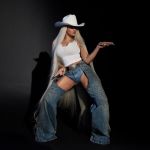
How are things for Dolce & Gabbana?
The current state of play of one of the most complicated cases of recent fashion
April 2nd, 2021
Dolce & Gabbana is a divisive brand, no doubt, but one that for decades has been part of the Italian and international imagination. In public perception, their story is clearly divided, in November 2018, by a dramatic watershed: the promotional video for the titanic fashion show, then cancelled, which was supposed to inaugurate their glorious entry into the Chinese market. Things turned out differently: the video aroused the indignation of half the world, a then newborn Diet Prada hunched over the two designers with unprecedented violence and the Chinese business of the brand went into full crash-and-burn mode. The fashion world, dramatic by definition, soon declared the brand dead and buried – but perhaps its judgment was too hasty: although it is true that the China-gate represented a critical turning point for the brand, it is also true that it was not a fatal headshot. How did Dolce & Gabbana recover?
After the China-gate
In fact, despite having suffered a severe blow not only from customers but also from online luxury retailers, already at the end of the fiscal year 2019, which ended in March of two years ago, the total revenue of the brand had increased by 5%, half of which came from direct sales in shops and outlets. Meanwhile, celebrities such as Katy Perry, Will Smith, Kim Kardashian, Michael Shannon and even Emilia Clarke had returned to wear the brand while in June 2019 The New York Times' high fashion priestess, Vanessa Friedman, announced the brand's resurrection. According to Lyst's report at the time, then, after falling to 21st place among the most sought-after brands, Dolce & Gabbana had already returned to 15th in the first quarter of 2019 so just after the scandal. In early 2020, then, with the arrival of Lucio Di Rosa as Head Of Worldwide Celebrities & Vip Relations marked a change of gear, with the return of their dresses on the red carpet also arriving wearing Kate Middleton and Melania Trump, a bulwark woman of the luxury unwoke. Star power is something fundamental for a brand that is always as good as its clientele: the latest celebrity on the list is Deva Cassel, the new face of Dolce & Gabbana's perfume line and daughter of Vincent Cassel and Monica Bellucci. Finally, last February came the announcement that a group had proposed to the two founders to sell the billionaire brand, a proposal that was rejected but that signals the state of health of the brand: it is the thriving companies that attract buyers, not those in crisis.
Two aces up their sleeve
The brand has proved extremely resistant despite the controversies that have surrounded it, also thanks to two other aces up its sleeve: the first is the Alta Sartoria/Alta Moda line (for men and women respectively) that has resisted well the shocks of public opinion thanks to a loyal clientele, the second (and less obvious) is their success in the circles of archive fashion, which instead have kept alive the brand's memory among fans of the rarest and most eclectic designs. Both of these "aces up its sleeve" have to do with the quality of the offer: recently, talking about the recent couture trend for men, an article by WWD noted how the clientele of Dolce & Gabbana's Alta Sartoria is equally divided between men and women, professionals with strong economic availability who love not only the elaborate clothes to order of the brand but also its pharaonic fashion shows (the last was in Piazza della Signoria in Florence) accompanied by luxurious dinners and various divertissements that make the brand's customers part of a glitzy world that go far beyond the simple fashion show. The same development of the Alta Gioielleria line shows that Dolce & Gabbana's most exclusive clientele caters to designers for made-to-order products covering all aspects of lifestyle such as elaborate watches or necklaces.
As for archive fashion, on the other hand, mostly military trousers and bomber jackets dating back to the 90s and early 2000s – all products that, starting from specialized showrooms such as Silver League, have instead seduced a different clientele, more underground and with less purchasing power but with greater design culture. This second-hand clientele does not contribute directly to the turnover of the brand (which however has no problems with the concept of discounts and outlets) but helps it, in a completely immaterial way, to be perceived as part of the Gotha of archive fashion reminding all enthusiasts that, before the gigantic logos, the crazy and chaotic colours and the muscle jocks in underwear, Dolce & Gabbana had a more detailed and precise design language and imagery than immediately commercial (emerged, for that reason, in the FW20 collection that was perhaps their best ready-to-wear in the last ten years) that had made them the protagonists of that Milanese fashion of the 90s of which the late Franca Sozzani was the queen.
An unstoppable success
Finally, it all boils down to the question: "What does a brand need to succeed?" In the world of luxury, the variety of examples challenges predictions and the perception that exists of a brand is completely different depending on the personal sphere of influence of each person. In particular, Dolce & Gabbana has remained over the years perhaps the only Italian fashion brand to organize hyper-spectacular high fashion collections that, even locally, involved entire cities becoming real collective events in the same style in which, in the 90s, the Alta Roma fashion shows took place on the stairs of Trinità de' Monti involving huge masses of audiences. Something that, before the lockdown, took place with the Resort and Pre-Fall fashion shows of many brands that, however, could not get out of their closed circles to become a real popular phenomenon. Dolce & Gabbana was also among the first to invite the very first fashion bloggers in the front row in 2009 and, in 2015, to include among the proto-influencer guests such as Cameron Dallas, employ plus-size models but also to use the star power of Monica Bellucci and Isabella Rossellini in their shows.
Dolce & Gabbana, as a brand, has resisted the intrinsic quality of its offer that moves across the spectrum of consumption and regardless of the quality of aesthetics: collectors love their vintage, the general public the prêt-à-porter that is all pop and logomania while the well-to-do and loyal clientele researches from them a type of traditional luxury linked to the status symbol and a certain showiness declined in ambitious projects that go beyond the scope of clothes only but still represent a level of craftsmanship and customization at the highest levels offered by the fashion industry. Here's what designers said in a recent interview with WWD about the success of atelier services for male audiences:
We have a critical attitude toward made-to-measure because we think it often leads to a well-made product, but still industrialized. Alta Sartoria is a very different project that is based on the relationship, the dialogue between the client and our team — from the atelier, to the tailor. It is an intimate connection, almost a confession, through which we get to know the client and his world.
And now?
The controversial saga that began with China-gate, however, has not yet ended. According to Julianna Law of Jing Daily, the brand's recent move out of Chengdu International Finance Square, one of Western China's major urban and commercial centres, would suggest a strategic retreat due to weakening sales in the country. While the brand's fame clashes with the nationalism of Chinese consumers in Asia, on the other side of the world Dolce & Gabbana has sued Tony Liu and Lindsey Schuyler of Diet Prada for defamation for $600 million - certainly a symbolic figure that will be reduced, but which has the potential, in case the two designers win, to hit and sink Diet Prada forever. It is worth noting that the lawsuit was not filed with Diet Prada but with its two founders - a type of legal attack that was undoubtedly more personal and direct and that, to quote Jing Daily all the time, «paint[s] the brand as aggressive».
It must be said, however, that the perception you have of a brand varies from country to country: if in China and in the world of fashion activists Dolce & Gabbana is a villain, in Europe and America the weight of the China-gate controversy has not been felt at all, the parades of the two are still an event and their gigantic billboards still carpet railway stations and airports in Milan and half of Italy. The case of Dolce & Gabbana, in the final analysis, remains perhaps the most complex and emblematic of fashion history in the age of social media and post-truth.


































































































